Guide to Isle au Haut, Maine | Eat, Stay & Play
With planning, you can enjoy a perfect day-trip of hiking or biking through the untamed natural beauty of Isle au Haut.
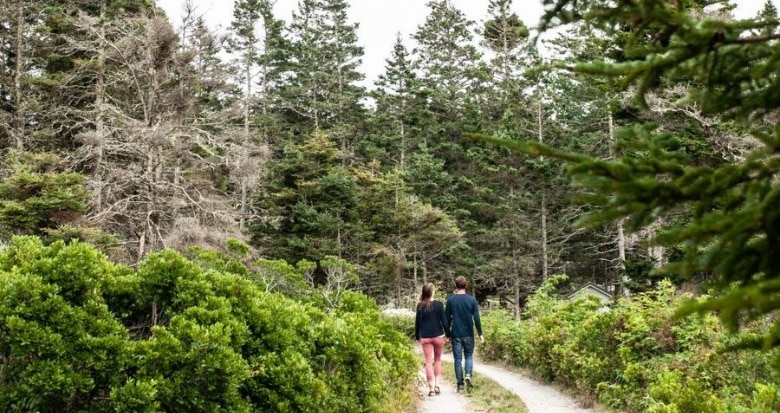
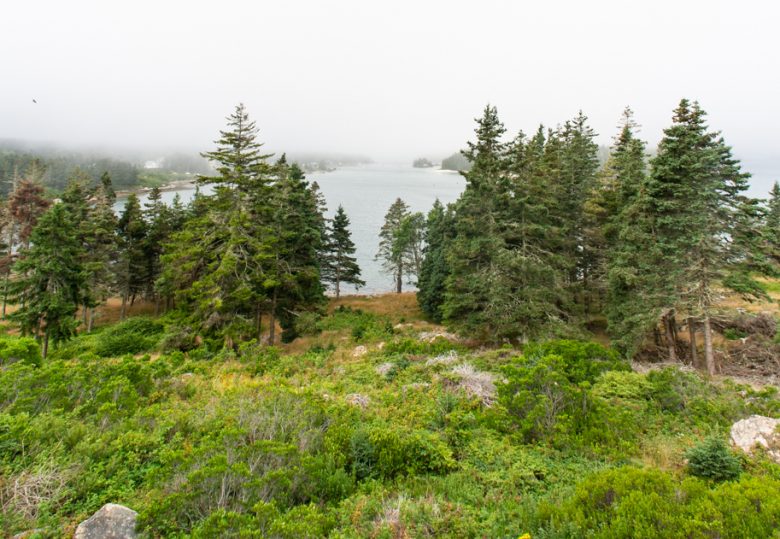
Photo Credit : Winky Lewis
With no inns or motels, and offering spotty cell service at best, Isle au Haut (pronounced “i-la-HO”) isn’t your typical vacation idyll, although a few hundred people do have summer homes here. For most visitors, it’s instead an adventure destination, ideal for day-trippers who are comfortable leaving their cars on the mainland and eager to spend hours walking or biking in rustic and often rugged surroundings.
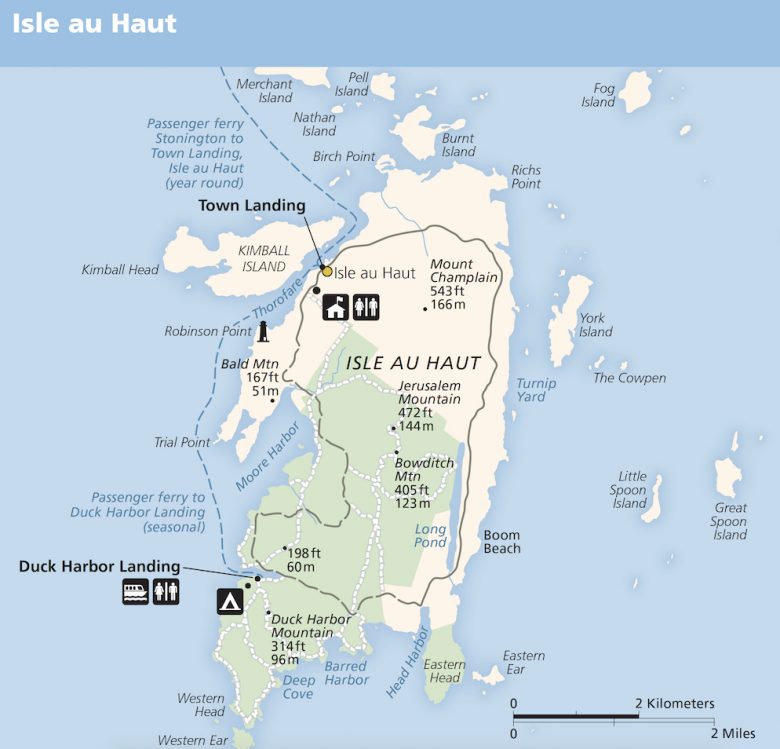
Getting there: Isle au Haut is about a 40-minute boat ride from the coastal town of Stonington. In the summer the Isle au Haut Ferry offers daily round-trip passenger service from Stonington to Town Landing; some of those trips also stop at Duck Harbor Landing, near the access point for the Acadia National Park trail system. Old Quarry Ocean Adventures also offers round-trips to Town Landing, along with a number of education and scenic cruises.
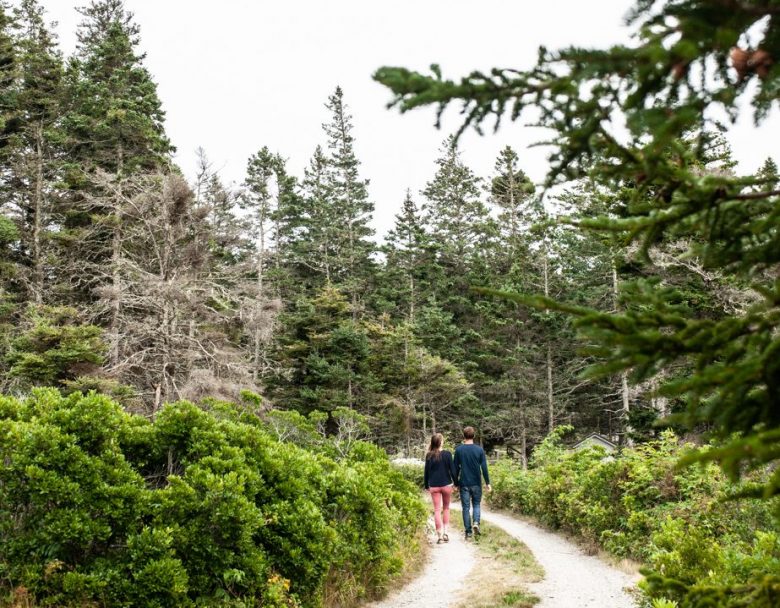
Photo Credit : Winky Lewis
Guide to Isle au Haut, Maine
What to Do on Isle au Haut, Maine
HIKING
The Acadia National Park portion of Isle au Haut contains the island’s most popular trails, including three dramatic ocean-hugging paths at the southern tip of the island. The Western Head Trail is a moderately difficult 1.3-mile stretch with great views and, at low tide, a land bridge to the rocky islet of Western Ear. It connects to the short but steep Cliff Trail, which leads to a dramatic high bluff; continuing up the coast is Goat Trail, a fairly strenuous route that traverses rocky beaches and scenic coves. Inland, check out the 2.4-mile out-and-back Duck Harbor Mountain Trail — reputedly the island’s toughest trek, it ends atop its namesake mountain, which has panoramic views of the whole island.BIKING
Of the dozen miles of roads on Isle au Haut, more than half are unpaved, so a mountain bike or hybrid is your best bet for pedaling around. Visitors can bring their own on the ferry for an extra fee, or rent from the island’s boat service, Isle au Haut Ferry. All bike explorations begin from Town Landing — the only spot you can disembark with a bike — but soon enough you’ll find yourself deep into nature as you cruise past woods, bogs, and meadows.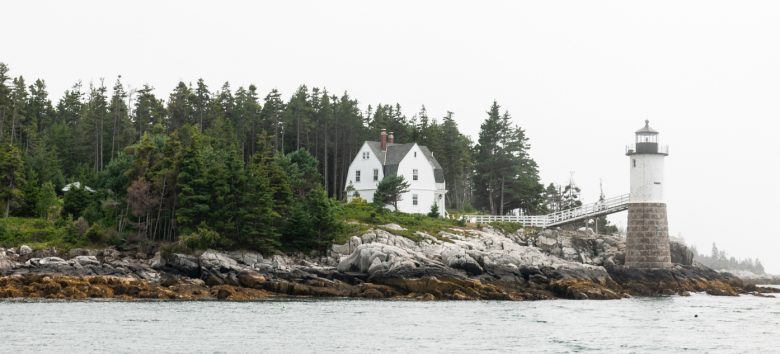
Photo Credit : Winky Lewis
ISLE AU HAUT LIGHT
Those taking the ferry down to Duck Harbor Landing will get a dead-on shot of Isle au Haut’s working 1907 lighthouse and its picturesque wooden catwalk bridge, situated on Robinson Point. Alternatively, if you get off at Town Landing you can walk about a mile to reach the point and stroll the grounds. None of the structures are open to the public; however, occasional tours of the beacon itself have been offered in the past — and might be again in the future, after a much-needed restoration project is complete. And those with means can actually stay on the property, in a seasonal rental called the Keeper’s House (for more on where to stay when visiting Isle au Haut, scroll down).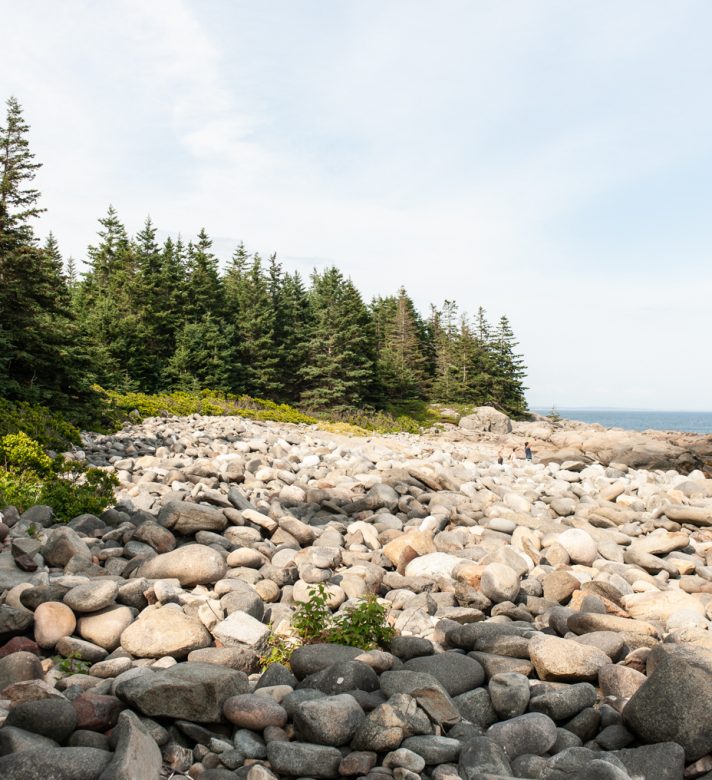
Photo Credit : Winky Lewis
BOOM BEACH & LONG POND
On the far side of Isle au Haut (the eastern, ocean side) you’ll find two very different natural treasures. Named for the sound of its boulders shifting in heavy seas, Boom Beach is a coastal strip that’s filled with rocks that have been tumbled into rounded, sculptural shapes; there are tide pools to explore and plenty of wildlife about, from gulls and cormorants to seals and loons. It’s not ideal for swimming, though, so after clambering on the rocks and looking out to sea, head to nearby Long Pond, a narrow freshwater lake with sandy beaches that’s custom-made for taking a dip.SHORE SHOP GIFTS
Open seven days a week in the summer, this Isle au Haut institution is the best kind of gift shop: homey, never kitschy. It carries locally made goods — including beautiful bowls and cutting boards carved by co-owner John DeWitt —as well as items from elsewhere in Maine. Look for things like hand-crafted lobster buoy key chains, jewelry, knitted hats, one-of-a-kind totes, artwork, and souvenir T-shirts.Where to Eat on Isle au Haut, Maine
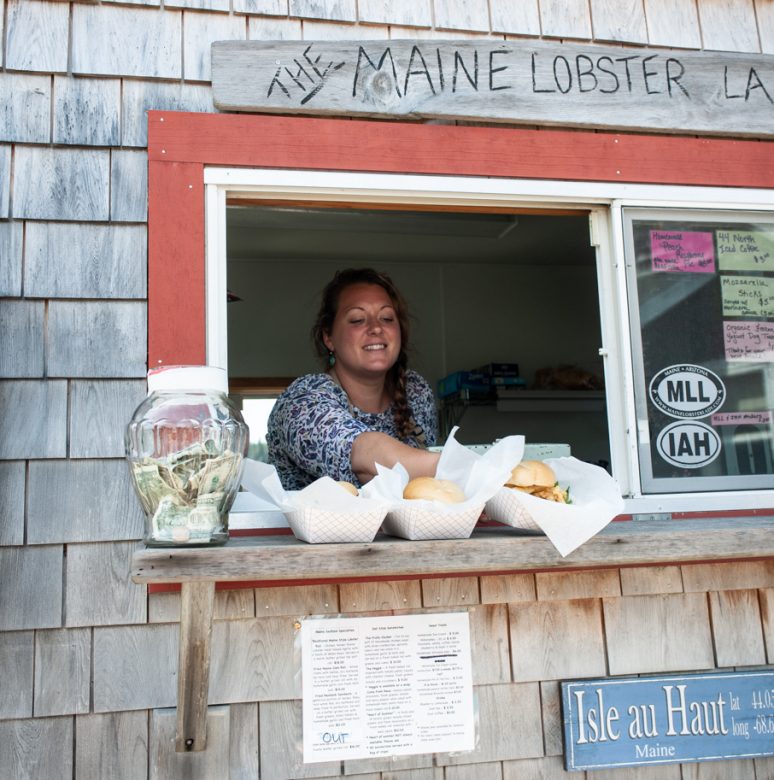
Photo Credit : Winky Lewis
THE MAINE LOBSTER LADY
Made-from-scratch treats, including whoopie pies and blueberry lemonade, are the hallmark of this seasonal food truck co-owned by a former Maine fisherman. Lobster rules the menu: There are generously portioned lobster rolls, done traditional (cold with mayo) or “Connecticut-style” (hot with melted butter), deep-friend lobster chunks, lobster cocktail, lobster bisque, and occasional specials such as lobster mac and cheese and lobster biscuits and gravy.
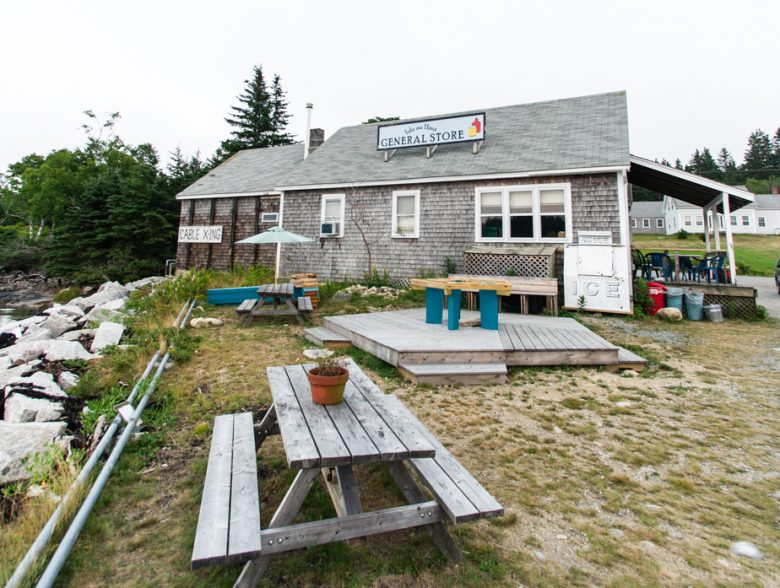
Photo Credit : Winky Lewis
THE ISLAND STORE
This one-stop for snacks, groceries, and assorted necessities offers picnic tables by the water that make for a fine perch on a fair-weather day. Inside, you may find everything from garden-grown fruit and veggies to locally caught seafood, and beer and wine to ice cream. Plus, there are T-shirts and other souvenirs, ideal for perusing before you board the ferry back to Stonington.
Where to Stay When Visiting Isle au Haut, Maine
Lodging that is actually on-island is extremely limited and almost always booked months in advance. That said, if you have the time and the money, the Keeper’s House provides the once-in-a-lifetime chance to stay at an actual operating lighthouse station ($2,500 per week for the whole property: four guest rooms and a cottage). You might also spot a few listings for entire-home rentals on Airbnb; however, they require a minimum weeklong stay during the high season (roughly$1,300–$2,ooo per week). On the budget-friendly side, there’s the Duck Harbor Campground, located in the Acadia National Park portion of Isle au Haut: These five primitive campsites ($20 a night) are very popular — and tricky to get to — so advance planning is critical.
For most visitors to Isle au Haut, the town of Stonington, situated at the tip of nearby Deer Isle, is the best bet for finding accommodations. Two scenic, convenient, and affordable places that Yankee editors have tried are the Inn on the Harbor, whose 13 comfy rooms are named for Maine windjammers, and Boyce’s Motel, which has 11 neat-as-a-pin options ranging fromsingle rooms to efficiency units and small apartments.
Have you been to Isle au Haut? Tell us about it!

